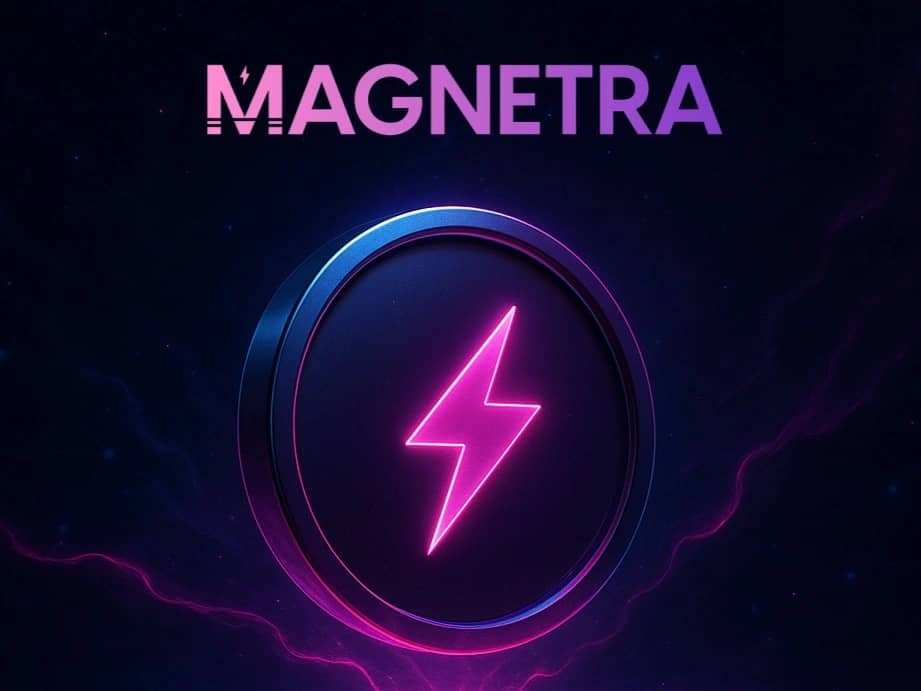위키 구독하기
Share wiki
Bookmark
Magnetra
Magnetra
Magnetra는 토큰화된 실물 자산(RWA)에 중점을 둔 기본 거래, 유동성 및 DeFi 서비스를 제공하도록 설계된 Mantra Chain에 구축된 탈중앙화 거래소(DEX)입니다. Mantra 생태계 내 유동성 및 활동의 중심 허브 역할을 하는 것을 목표로 합니다. [2]
개요
Magnetra는 실물 자산(RWA)의 토큰화 및 규제 준수를 위해 설계된 레이어 1 블록체인인 Mantra Chain을 위해 구축된 탈중앙화 거래소(DEX)입니다. Mantra 생태계 내에서 거래, 유동성 제공, 스테이킹, 및 DeFi 애플리케이션을 위한 기본 플랫폼 역할을 합니다.
Cosmos SDK를 사용하여 개발되었고 IBC(Inter-Blockchain Communication)를 지원하는 Magnetra는 Mantra Chain에서 누락된 핵심 금융 기능을 도입합니다. AI 지원 거래, 소셜 거래 요소 및 토큰화된 RWA 시장과 같은 도구를 제공합니다. 이 플랫폼은 모듈식이고 확장 가능하며 권한이 없는 안전한 환경에서 탈중앙화된 가치 교환과 금융 혁신을 지원하도록 설계되었습니다.
기술
Magnetra의 기술 아키텍처는 Cosmos SDK 및 CosmWasm 스마트 계약을 사용하여 Mantra Chain에 구축되며, Tendermint BFT는 합의를 보장하고 IBC 프로토콜은 크로스체인 상호 운용성을 가능하게 합니다. 백엔드는 Kubernetes를 통해 확장 가능하며 실시간 성능을 위해 사용자 지정 인덱서 및 API가 지원됩니다. 보안 조치에는 외부 감사, 다중 서명 재무부, AI 기반 위협 감지 및 버그 바운티 프로그램이 포함됩니다. 이 플랫폼은 개인화된 거래 통찰력과 자동화된 전략을 위해 AI를 활용하는 반면, 스마트 계약은 유연한 거래, 스테이킹 및 거버넌스를 가능하게 합니다. 개방형 API 및 SDK는 타사 통합 및 생태계 개발을 촉진합니다. [1]
기능
AMM
Magnetra의 자동화된 시장 조성자(AMM) 엔진은 변동성 자산에 대한 일정한 제품 풀과 스테이블코인 또는 토큰화된 RWA와 같은 유사한 자산에 대한 안정적인 풀을 포함하여 사용자 정의 가능한 풀 유형을 통해 여러 거래 전략을 지원합니다. 풀 생성자는 스왑 수수료, 유동성 임계값 및 시간 가중 평균 가격(TWAP) 오라클과 같은 매개변수를 조정할 수 있습니다. AMM에는 유동성 부트스트래핑 풀(LBP), RWA에 대한 허가된 풀 및 동적 수수료 모델과 같은 특수 옵션도 포함되어 있습니다. 자본 효율성을 개선하고 슬리피지 및 일시적 손실을 최소화하며 전반적인 사용성을 향상시키도록 설계되었습니다. [1] [2]
스테이킹
Magnetra는 사용자가 플랫폼에 기여하여 보상을 얻을 수 있는 수익 농사 및 스테이킹 메커니즘을 제공합니다. 참가자는 프로토콜 운영을 지원하기 위해 MGN 토큰을 스테이킹하여 생성된 수수료의 일부를 받거나, MGN 및 파트너 토큰과 교환하여 유동성을 제공하거나, 장기 약정에 대한 인센티브가 증가된 시간 제한 스테이킹을 선택할 수 있습니다. 이러한 기능은 지속적인 참여를 장려하고 프로토콜의 안정성을 강화하도록 설계되었습니다. [1] [2]
RWA 거래
Magnetra는 부동산 및 상품을 포함한 토큰화된 실물 자산(RWA)의 온체인 거래를 용이하게 합니다. 이 플랫폼은 허가된 보관자를 통한 온보딩, 접근성을 높이기 위한 분수 소유권 및 KYC/AML 준수를 통합하는 허가된 유동성 풀과 같은 기능을 지원합니다. 이러한 메커니즘은 규제 표준을 준수하면서 기존 자산을 탈중앙화 프레임워크에 통합하도록 설계되었습니다. [1] [2]
AI 거래 도구
Magnetra는 AI 기반의 고급 거래 도구를 통합하여 정보에 입각한 의사 결정 및 위험 관리를 지원합니다. 여기에는 실시간 거래 예측, 신호 생성 및 포트폴리오 최적화 제안이 포함됩니다. AI 시스템은 일시적 손실, 다변화 및 유동성 위험과 같은 요소를 평가하여 위험 평가를 위한 자세한 분석을 제공합니다. 이 플랫폼은 직관적인 인터페이스를 통해 사용 편의성을 강조하고 이메일, Telegram 또는 SMS를 통해 사용자 지정 알림을 제공하여 사용자에게 거래, 스테이킹 및 유동성 활동에 대한 업데이트를 제공합니다. 이러한 도구는 전략 실행과 전반적인 사용자 경험을 모두 개선하도록 설계되었습니다. [1] [2]
소셜 거래
Magnetra의 소셜 거래 인프라는 협업적이고 투명한 거래를 촉진하도록 설계되었습니다. 사용자는 플랫폼에서 직접 고성능 트레이더의 전략을 자동으로 복제하여 복사 거래에 참여할 수 있습니다. 공개 트레이더 프로필에는 투자 수익률(ROI), 거래량 및 승률과 같은 주요 지표가 표시되고 리더보드에는 최고 성과자들이 강조 표시됩니다. 고급 기능에는 뉴스 및 소셜 미디어 소스의 시장 심리를 추적하여 의사 결정에 대한 추가 맥락을 제공하는 AI 기반 감정 분석이 포함됩니다. 이 플랫폼은 또한 사용자가 큐레이팅된 토큰 바스켓을 만들고 공유하여 그룹 전략을 용이하게 하고 참여를 확대할 수 있는 대화형 커뮤니티 포트폴리오를 지원합니다. [1] [2]
거버넌스
Magnetra는 MGN 토큰 보유자가 프로토콜에 대한 변경 사항을 제안, 투표 및 실행할 수 있는 온체인 거버넌스 시스템에 따라 운영됩니다. 이 시스템은 대규모 보유자의 불균형적인 영향을 완화하기 위해 이차적 투표를 사용하여 탈중앙화된 의사 결정과 커뮤니티 감독을 유지합니다. [1]
MGN
MGN은 Magnetra의 기본 토큰으로, 거버넌스 및 유틸리티 기능을 모두 제공합니다. 보유자는 활성 온체인 거버넌스 시스템을 통해 플랫폼 정책, 수수료 모델 및 보상 할당에 투표하여 의사 결정 프로세스에 참여할 수 있습니다. 이 토큰은 MGN을 보유하거나 스테이킹하는 사용자에 대한 거래 수수료 감소, 새로운 플랫폼 기능에 대한 액세스, 스테이킹 보상, 유동성 인센티브 및 수익 농사 기회와 같은 이점도 제공합니다. 이러한 기능은 지속적인 생태계 참여와 프로토콜 개발을 지원합니다.
토큰 경제
MGN은 총 10억 개의 토큰 공급량을 가지며 다음과 같은 할당을 가지고 있습니다.
- 스테이킹 및 유동성 마이닝: 25%
- 생태계 개발 및 파트너: 20%
- 팀, 자문 및 개발: 20%
- 커뮤니티 인센티브: 15%
- DAO 재무부: 10%
- 토큰 판매: 10%
잘못된 내용이 있나요?
